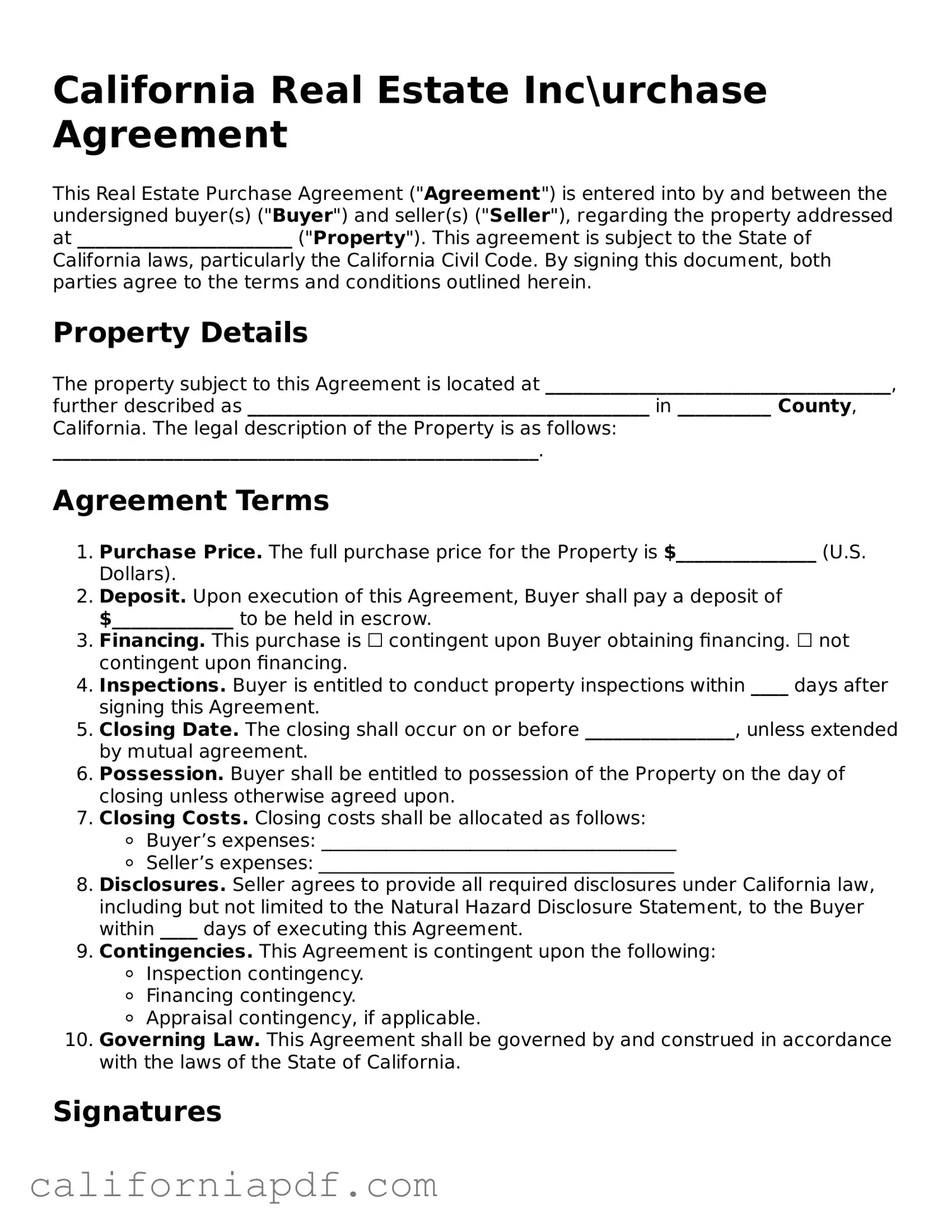The Residential Lease Agreement shares similarities with the California Real Estate Purchase Agreement, primarily in detailing the terms of a property transaction. While the Purchase Agreement outlines the conditions for buying and selling real estate, the Lease Agreement specifies the conditions under which a property is rented. Both documents include critical information such as property details, parties involved, financial terms, and obligations to ensure clarity and legality in the arrangement.
Another document similar to the California Real Estate Purchase Agreement is the Bill of Sale. This document is used to transfer ownership of personal property from a seller to a buyer. Like the Real Estate Purchase Agreement, a Bill of Sale provides a legal record of the transaction, lists the item(s) being sold, the price, and the parties' details. While a Bill of Sale can apply to various types of personal property like vehicles or equipment, the Real Estate Purchase Agreement specifically pertains to the sale of real property.
The Loan Agreement also bears resemblance to the Real Estate Purchase Agreement, as it involves detailed financial arrangements. In a Loan Agreement, the terms under which money is borrowed and repaid are laid out, including any interest or collateral. Similarly, the Real Estate Purchase Agreement includes financial terms related to the sale price, down payment, and potentially the financing method. Both documents ensure the financial aspects of the agreement are clearly understood and legally binding.
An Earnest Money Deposit Receipt can be compared to the California Real Estate Purchase Agreement too. This receipt acts as proof of the buyer’s commitment to the property transaction, securing the deal with a deposit. In essence, it's a part of the broader Real Estate Purchase Agreement process, underscoring the buyer's intent and financial stake in proceeding. Both documents facilitate trust and commitment toward finalizing the property sale.
The Property Disclosure Statement, often part of the real estate selling process, is somewhat akin to the California Real Estate Purchase Agreement. This document requires the seller to disclose any known issues or defects with the property that could affect its value or desirability. While the Disclosure Statement focuses on the condition of the property, it complements the Purchase Agreement, which constitutes the formal offer and acceptance including agreed terms and conditions of the sale, ensuring buyers are fully informed.
Last but not least, the Title Insurance Policy is related to the California Real Estate Purchase Agreement in its protective function during a property transaction. Title insurance safeguards against any legal or financial losses resulting from defects in the property title. The insurance policy is typically purchased as part of the closing process outlined in the Real Estate Purchase Agreement, highlighting its role in ensuring a secure and undisputed transfer of property ownership.
